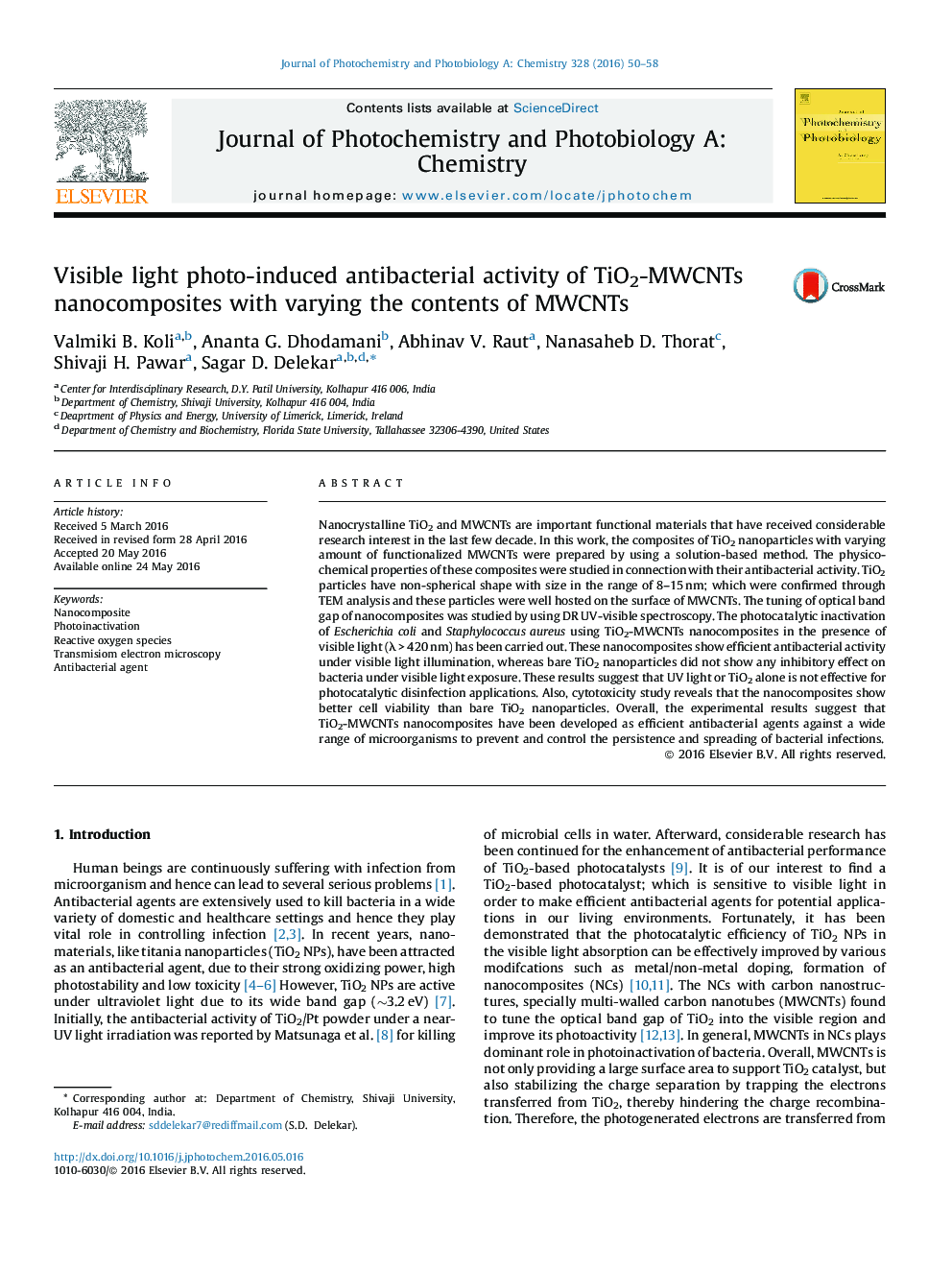| کد مقاله | کد نشریه | سال انتشار | مقاله انگلیسی | نسخه تمام متن |
|---|---|---|---|---|
| 25918 | 43920 | 2016 | 9 صفحه PDF | دانلود رایگان |

• Synthesis of TiO2–MWCNTs nanocomposites using simple sol-gel method at low temperature.
• Tunable optical band gap of TiO2–MWCNTs nanocomposites in the visible region.
• Efficient photoinactivation of bacteria for higher content of MWCNTs in the nanocomposites.
• Due to less cytotoxic composites, these materials would be biocompatible towards different biological applications.
Nanocrystalline TiO2 and MWCNTs are important functional materials that have received considerable research interest in the last few decade. In this work, the composites of TiO2 nanoparticles with varying amount of functionalized MWCNTs were prepared by using a solution-based method. The physico-chemical properties of these composites were studied in connection with their antibacterial activity. TiO2 particles have non-spherical shape with size in the range of 8–15 nm; which were confirmed through TEM analysis and these particles were well hosted on the surface of MWCNTs. The tuning of optical band gap of nanocomposites was studied by using DR UV-visible spectroscopy. The photocatalytic inactivation of Escherichia coli and Staphylococcus aureus using TiO2-MWCNTs nanocomposites in the presence of visible light (λ > 420 nm) has been carried out. These nanocomposites show efficient antibacterial activity under visible light illumination, whereas bare TiO2 nanoparticles did not show any inhibitory effect on bacteria under visible light exposure. These results suggest that UV light or TiO2 alone is not effective for photocatalytic disinfection applications. Also, cytotoxicity study reveals that the nanocomposites show better cell viability than bare TiO2 nanoparticles. Overall, the experimental results suggest that TiO2-MWCNTs nanocomposites have been developed as efficient antibacterial agents against a wide range of microorganisms to prevent and control the persistence and spreading of bacterial infections.
Journal: Journal of Photochemistry and Photobiology A: Chemistry - Volume 328, 1 September 2016, Pages 50–58